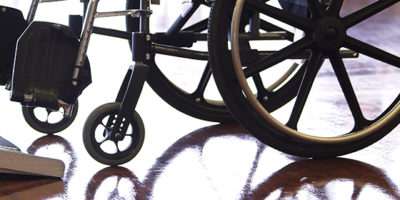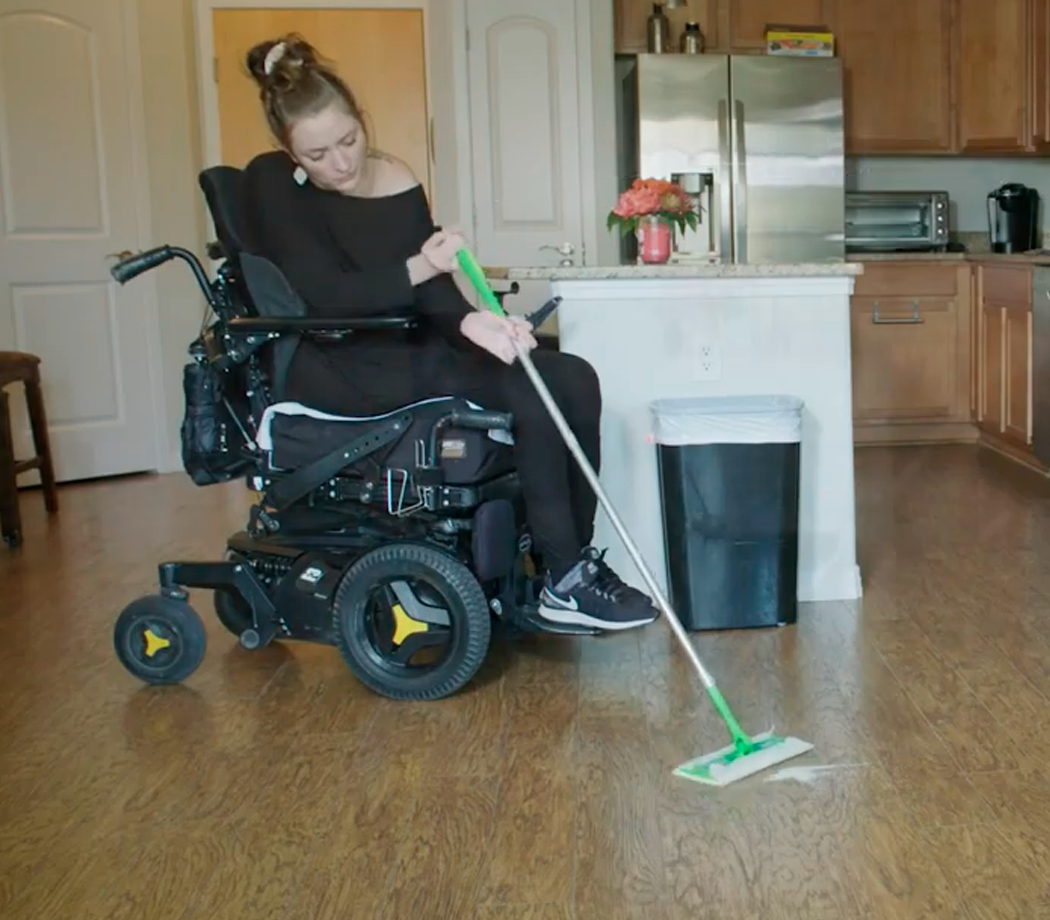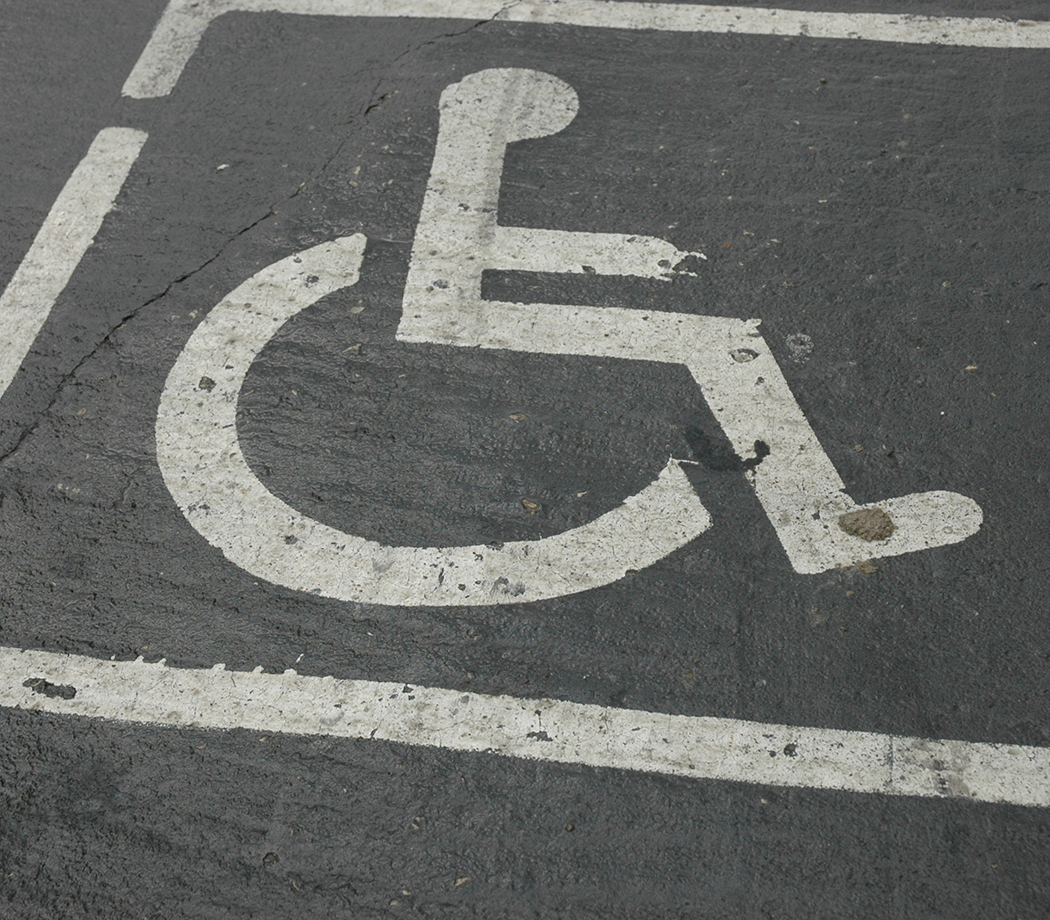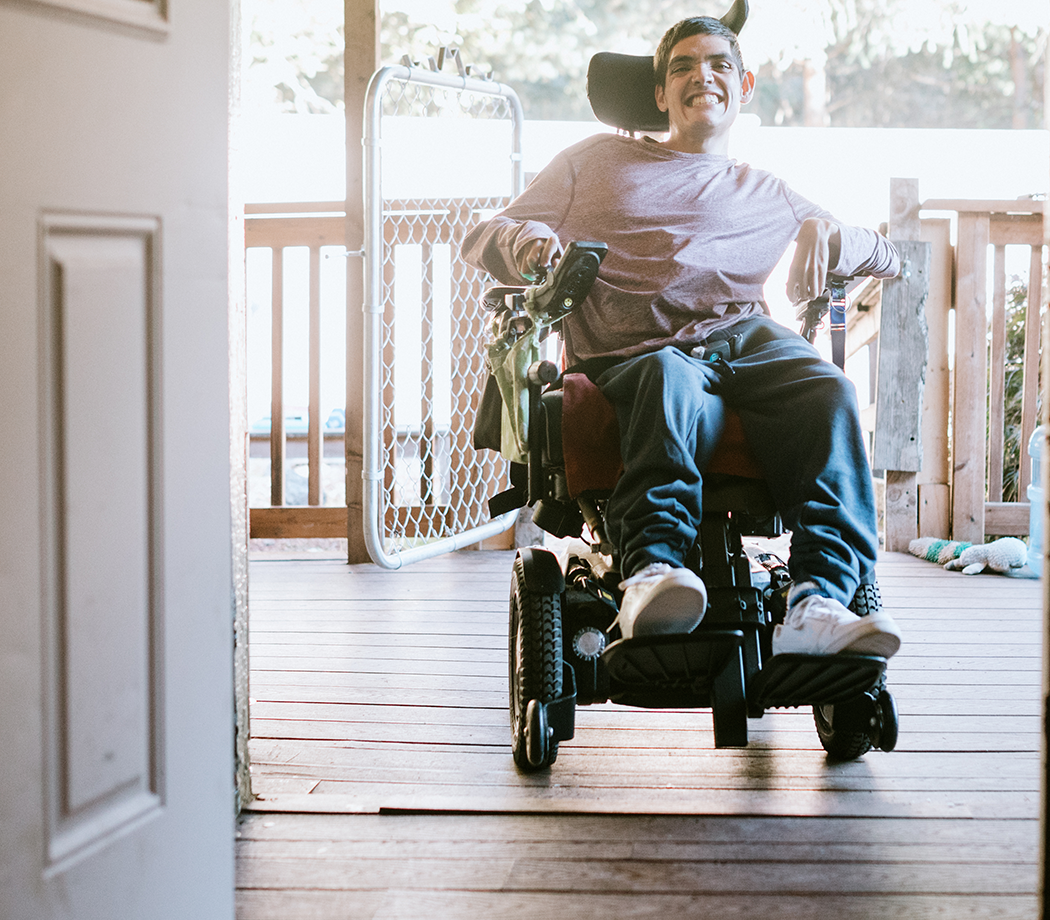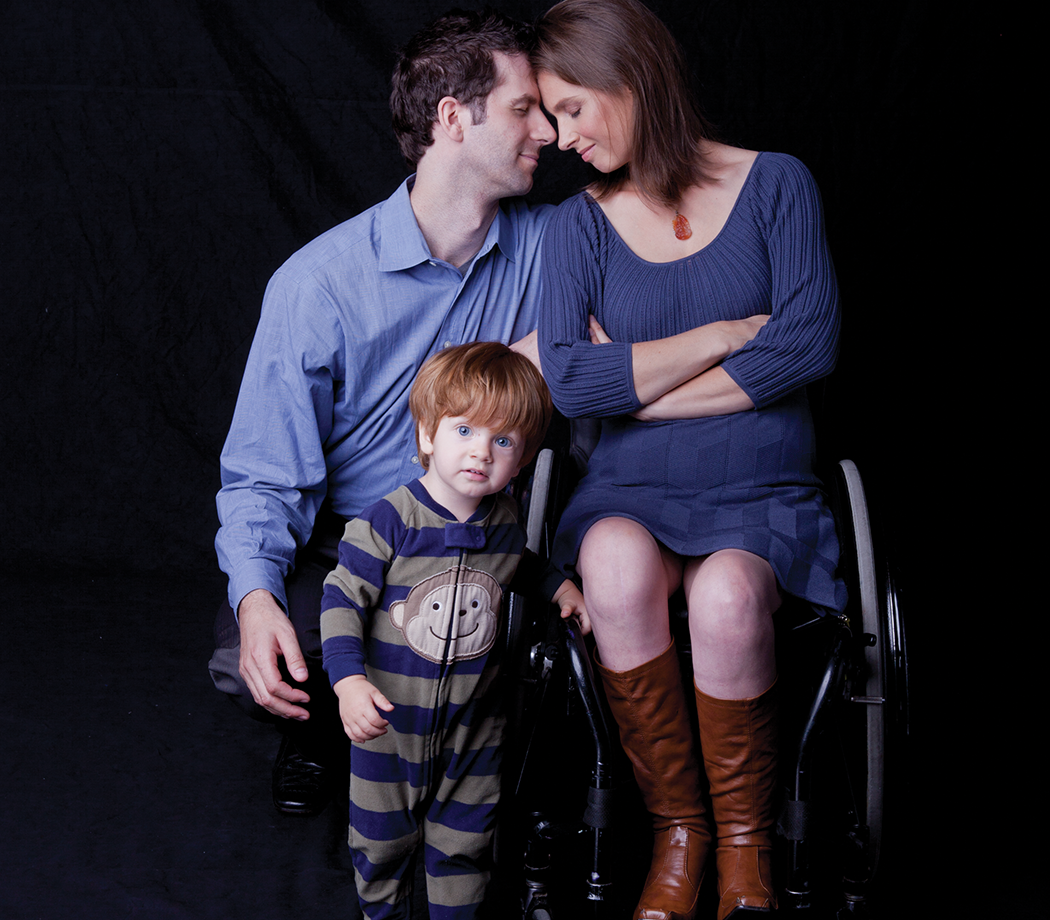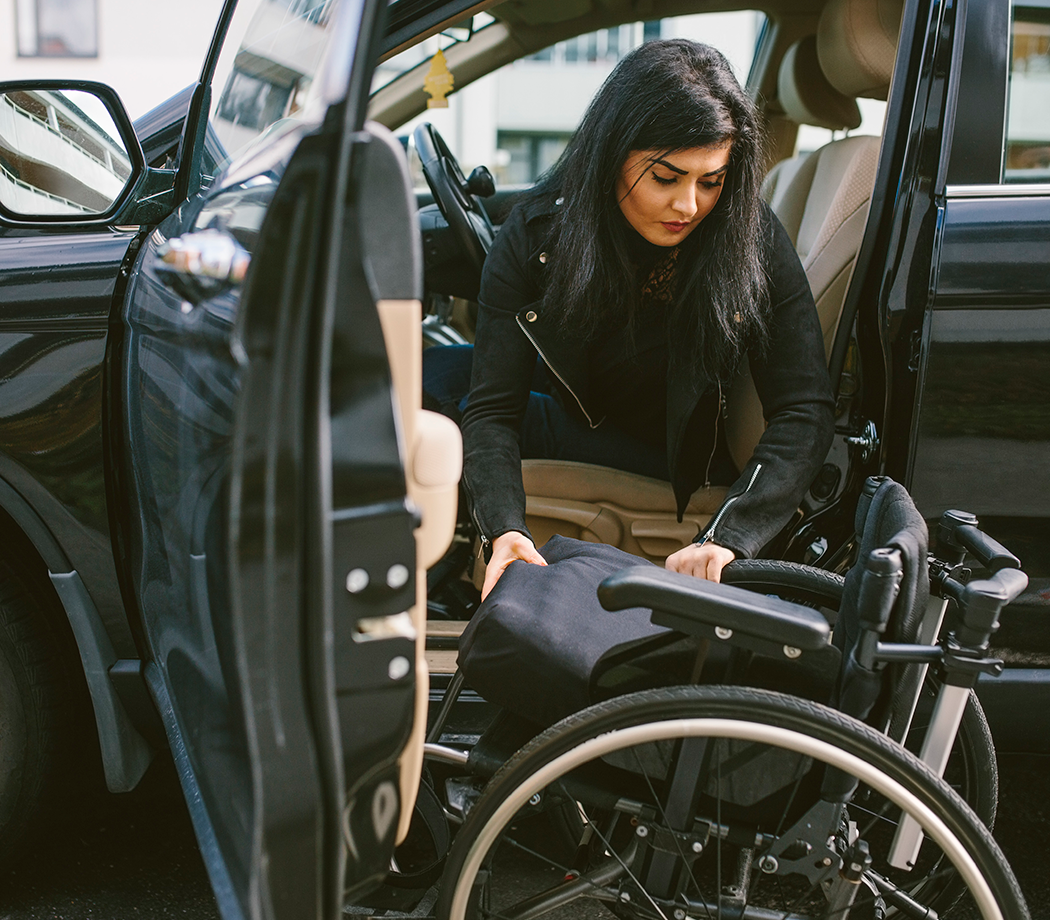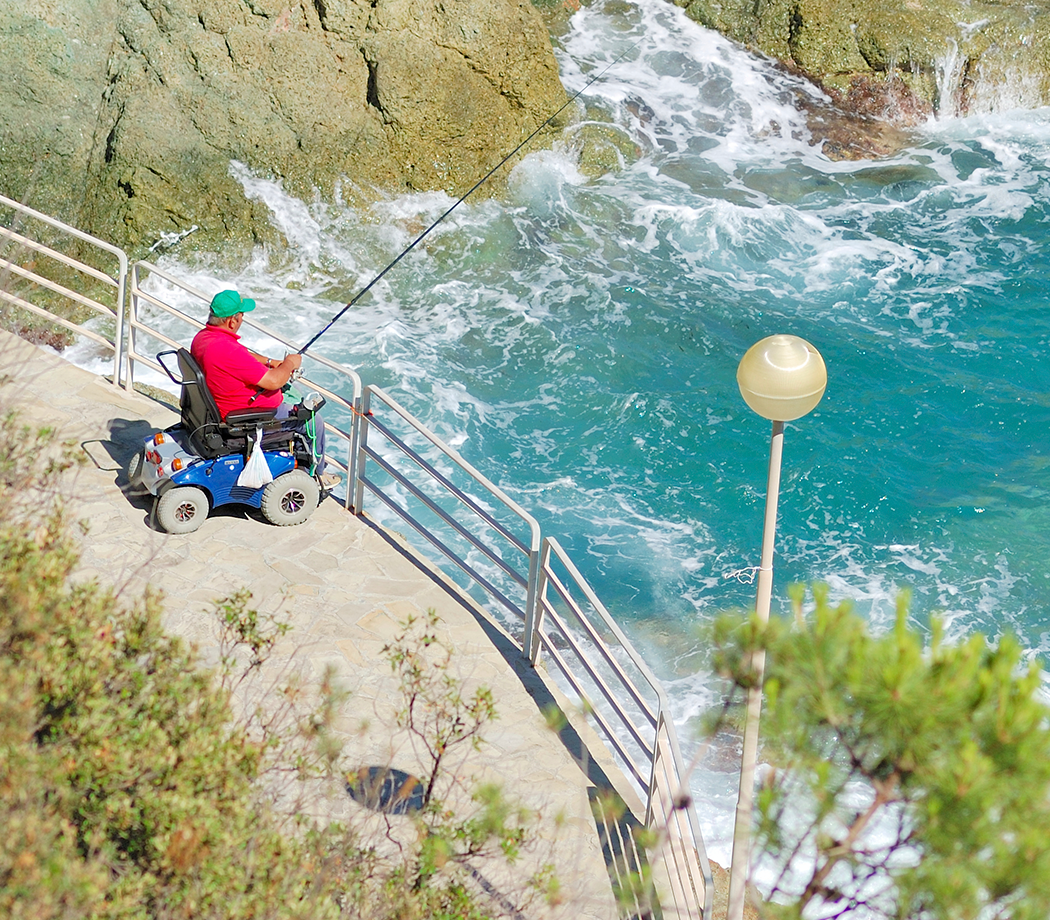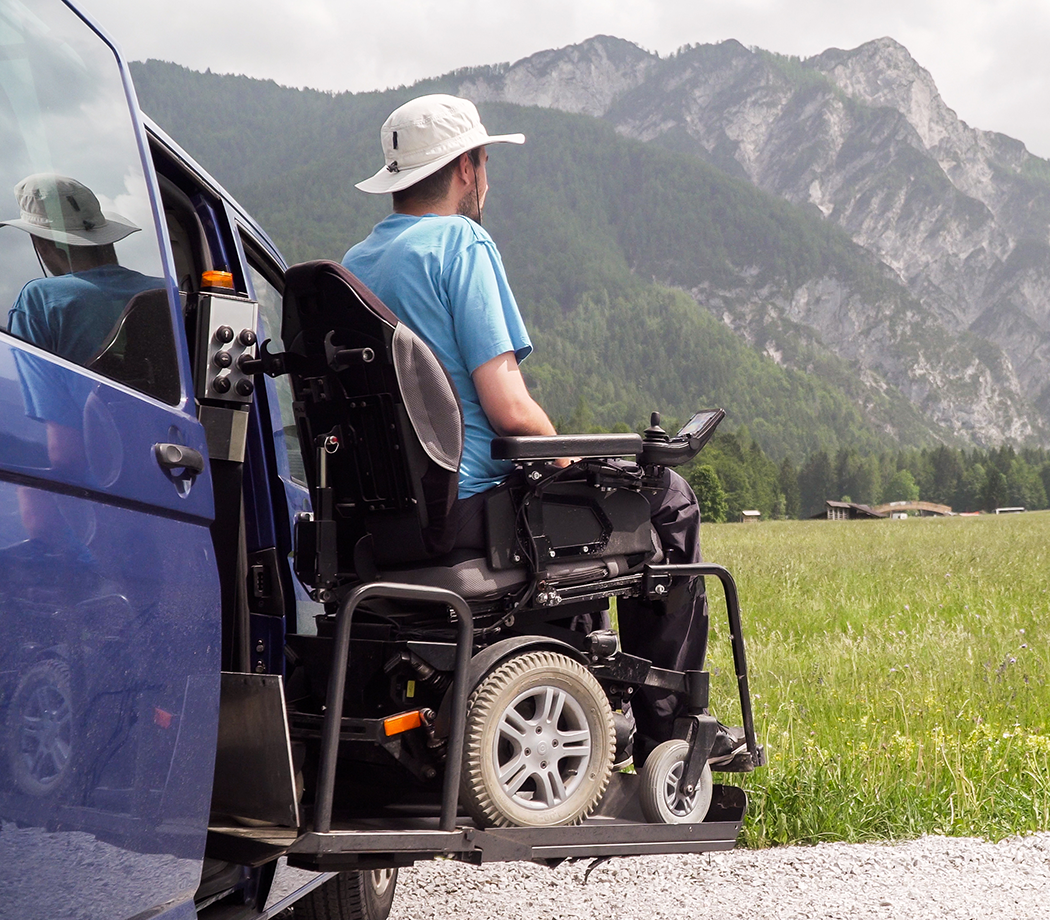Cars and Driving
There’s more to having a set of wheels than getting from here to there. Jumping in a car is a ticket to freedom, independence and adventure.
For people new to paralysis, driving is a sure way to get back into the swing of things. But can you do it? Can a paralyzed person get behind the wheel and handle the machine and the traffic?
Driving is quite possible for many people who are paralyzed, even those with very limited hand and arm function. A wide range of adaptive driving equipment and vehicle modifications are on the market today.
Driving with a disability often means relearning to drive. The rules of the road don’t change, but the controls do. Depending on one’s specific needs, an adapted vehicle may include the following:
- Hand controls for braking and accelerating
- Power assist devices for easy steering
- Touch ignition pads and gear shifts
- Adjustable driver’s seats
- Automatic door openers
- Joysticks for people with extremely limited hand function
For a person who has had a stroke, a spinner knob might be attached to the steering wheel for one-hand steering. A left gas pedal may be adapted if the right foot can’t operate the gas.
Driving Evaluation
The first step in the process is to get an evaluation from a qualified driver trainer. This will determine your basic driving set up, specific modifications and driving equipment to match your needs.
The evaluation also assesses the following:
- Vision screening and muscle strength
- Flexibility and range of motion
- Hand-eye coordination and reaction time
- Judgment and decision making
- Ability to handle adaptive equipment.
An evaluator may also take into account medications a potential driver is taking.
To find a qualified evaluator, visit your local rehabilitation center or contact the Association for Driver Rehabilitation Specialists (ADED), which maintains a list of certified specialists throughout the country.
As for getting a new driver’s license, most states require a valid learner’s permit or driver’s license to receive an on-the-road evaluation. You cannot be denied the opportunity to apply for a permit or license because you have a disability, but you may receive a restricted license based on the adaptive devices you require.
Selecting a Vehicle
Once you get the green light from the evaluation and your state’s motor vehicle department, it’s time to think about the vehicles that suit your abilities and needs.
Choosing the right car may lead you to more practical wheels than you might have chosen before paralysis. For example, two seater sports cars may fit the image you have of yourself but are pretty low on the practical scale. Minivans, those dreaded mom-wagons you swore to avoid, are of much higher utility.
It’s helpful to connect with other individuals with similar disabilities to see what they drive. Then be sure to collaborate with the evaluator and a qualified vehicle modification dealer.
People who sit in their wheelchair while driving or riding in minivans or full-size vans need either a manual tie-down or power lockdowns for safety. The manual systems usually require help getting in and out. Power units allow for more independence — you just roll into place and the chair automatically locks down.
Because there is no way a person can operate a van from a scooter, users must be able to transfer to the vehicle seat to drive. Electronic seats are available to help with the transfer.
Tips to Find the Car That Fits Your Needs
The following questions/tips can help with the vehicle selection process or adaptation of a car you already own:
- Does the necessary adaptive equipment require a van, or will a smaller passenger car do? In other words, will you be driving from a wheelchair or can you transfer to the car seat? If you can transfer into a car, your choices are much wider.
- Will you fit in a minivan? A person may sit taller in the chair and may not clear the ceiling.
- Can the vehicle accommodate the hand controls or other needed driving equipment?
- Will there be enough space to accommodate other passengers once the vehicle is modified?
- Is there adequate parking space at home and at work for the vehicle and for loading/unloading a wheelchair or walker? Be aware that full-size vans might not fit in your garage or public garages or even in certain parking spaces.
- If a third party is paying for the vehicle, adaptive devices, or modifications, are there limitations or restrictions on what is covered? Get a written statement on what a funding agency will pay before making your purchase.
- If you are adapting a used van or family vehicle, make sure the technician has lots of experience.
- All lifts are not created equally, some just won’t fit. Also, some lifts are built for wheelchair users and scooter users may not be able to use them.
The cost of modifying a vehicle varies greatly. A new vehicle modified with adaptive equipment can cost anywhere from $20,000 to $80,000.
Be a savvy shopper; investigate public and private financial assistance. Contact your state’s department of vocational rehabilitation or another agency that provides vocational services and, if appropriate, the Department of Veterans Affairs.
Also, consider the following to help finance your new or adapted vehicle:
- Some nonprofit groups that advocate for individuals with disabilities have grant programs that help with adaptive devices.
- If you have private health insurance or workers’ compensation, you may be covered for adaptive devices and vehicle modification. Check with your insurance carrier.
- Several auto manufacturers, including Toyota, Chrysler, Ford, and General Motors, have rebate or reimbursement plans for vehicles that will be modified.
- Some states waive the sales tax for adaptive devices if you have a doctor’s prescription for their use. You may also be eligible for medical expense-related savings on your federal income tax return; consult a tax specialist.
Find a qualified dealer to modify your vehicle. Ask questions, check credentials and references.
- Do they work with evaluators?
- Will they examine your vehicle before you purchase it?
- Do they require a prescription from a physician or other driver evaluation specialist?
- Do they provide training on how to use the equipment?
- Do they provide service? What is the cost? How long will it take to do the work? What is the warranty?
Joystick Motoring
The joystick has enabled individuals living with quadriplegia to hit the road. Joystick car systems have been around long enough to establish their safety, reliability and performance.
You may face a choice between a mechanical/hydraulic system (like an airplane) or electronic system (like a PlayStation). It may come down to your comfort level with electronics and any worries about a total power shutdown at 70 mph.
A California company called dSi custom fits its Scott mechanical system to each driver. The firm says mechanical is more reliable and more refined than electronic. They like to use big Ford vans and stay in touch with drivers (including some with spinal cord injury up to C4/C5) who’ve logged more than 300,000 miles on the system.
EMC offers an electronic solution called Aevit 2.0. A main advantage is that Aevit does not require modification of original equipment brakes, steering and airbag assemblies. This means you can resell the vehicle without the mods. Also, an Aevit system can be operated by a non-disabled driver. The Scott system, by contrast, is joystick only.
If you’re thinking about going joystick, you can’t get one without a referral from a driving instructor. Also, the importance of training cannot be overstated.
A joystick system will run upwards of $40,000 to $65,000, plus the cost of the van. Third parties, including private insurance, vocational rehab and the VA, have paid for these modifications, so investigate your options. Additionally, ask each manufacturer for user references and if at all possible, check out each system yourself.
Vehicle Discounts
Ford Mobility Motoring offers up to $1,000 of assistance toward the cost of adaptive equipment on a new Ford, Lincoln or Mercury vehicle. Ford Mobility Motoring Customer Care Center.
GM Mobility Program with OnStar offers up to $1,000 reimbursement ($1,200 on Chevy Express/GMC Savana vans) plus two extra years of the OnStar safety and security service on any eligible new GM vehicle (except Cadillac).
Toyota Mobility Program provides cash reimbursement of up to $1,000 toward aftermarket adaptive equipment or conversion installed on any eligible purchased or leased new Toyota.
The Chrysler Automobility Program provides up to $1,000 in financial assistance toward the installation of adaptive equipment on new Chrysler, Jeep and Dodge vehicles.
Hyundai Mobility Program offers $1,000 toward the cost of adaptive equipment. See dealer for more.
Volvo Mobility Program reimburses up to $1,000 toward the cost of adaptive equipment added to a new Volvo. Mobility by Volvo Center.
Resources
If you are looking for more information or have a specific question, our Information Specialists are available business weekdays, Monday through Friday, toll-free at 800-539-7309 from 9am to 8pm ET.
Additionally, the Reeve Foundation maintains a fact sheets with additional resources from trusted Reeve Foundation sources. Check out our repository of fact sheets on hundreds of topics ranging from state resources to secondary complications of paralysis.
We encourage you to reach out to support groups and organizations, including:
- Accessible Vans of America (AVA ) rents and sells full-size and lowered floor minivans.
- National Mobility Equipment Dealers Association (NMEDA) is a trade group of companies that sell adaptive driving equipment.
- National Highway Traffic and Transportation Safety Administration offers advice on driver training, vehicle selection and vehicle modification. Search under “adaptive.”
- Wheelers Accessible Van Rentals rents wheelchair and scooter accessible transportation by the day, week, month and longer.

